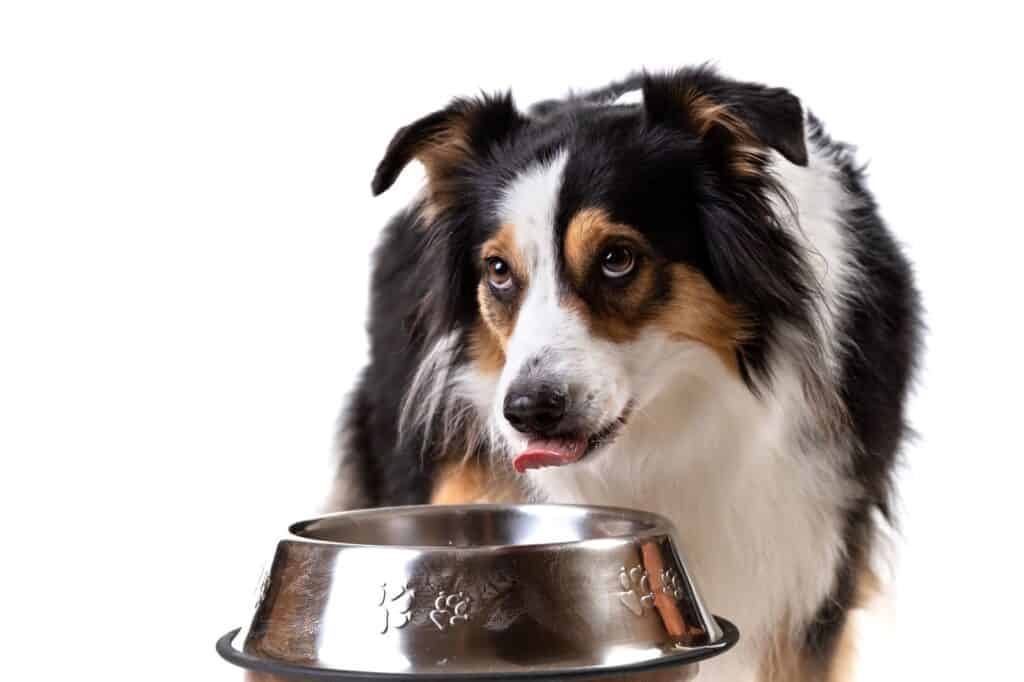7 Heart-Breaking Reasons Australian Shepherds Stop Eating
It’s not uncommon for pet owners to be concerned when their beloved Australian Shepherd suddenly loses interest in food. After all, Aussies are known for their energetic personalities and hearty appetites. So, when your canine companion starts turning their nose up at mealtime, it’s natural to wonder what might be going on and how to help them get back to their normal eating habits.
A variety of factors can contribute to a change in your dog’s appetite, from health-related issues to environmental changes. One possible reason for your Australian Shepherd’s sudden disinterest in food could be that they are experiencing stress or anxiety, which can be triggered by new environments, a change in routine, or even separation from their owner. Additionally, it’s essential to consider any recent changes to their diet or the introduction of new treats that might be causing a negative reaction.

It’s also worth mentioning that sometimes, dogs can become picky eaters if they’ve grown accustomed to being fed table scraps or treats in addition to their regular meals.
Keep in mind that every dog is different, and while some changes in appetite might be temporary and harmless, others could indicate a more serious underlying health issue. It’s always best to consult with your veterinarian to rule out any medical concerns and determine the best course of action to get your Australian Shepherd back on track with their eating habits.
Potential Health Issues
There could be several reasons for your Australian Shepherd not eating, and identifying any potential health issues is crucial. Let’s examine some of the common reasons.

Pain or discomfort can be a significant factor to consider, as it can make the act of eating too difficult or unenjoyable for your dog. If your dog is continuously licking or drooling while trying to eat, it may indicate mouth pain resulting from dental issues, such as an infected tooth or dental disease. Another possible reason for not eating could be a more severe health problem, like a tumor or cancer.
In such cases, it’s essential to consult with a veterinarian for appropriate medical guidance and treatment.
Gastrointestinal problems like an upset stomach, inflammatory bowel disease, or gastroenteritis also contribute to a loss of appetite. Just like humans, when dogs have stomach issues, they don’t feel like eating. Similarly, viral infections like parvovirus and bacterial infections such as kennel cough could make your Aussie lose interest in food as their body focuses on fighting the illness.
Another possibility to consider in some cases might be diabetes, which can cause sudden changes in your Australian Shepherd’s eating habits. In this case, they might refuse to eat even their favorite treats. Keep an eye out for symptoms like increased thirst and frequent urination, as these may indicate an underlying issue like diabetes, liver disease, or kidney disease.
Moreover, conditions like hypothyroidism, pancreatitis, and intestinal parasites may offset your dog’s metabolism and discourage them from eating. If you suspect your dog suffers from any of these health issues, it’s best to consult with a veterinarian for a proper diagnosis and treatment plan.
Remember, our furry companions can’t talk, so it’s up to us to pay close attention to any changes in their behavior or eating habits. Addressing the issue early on can significantly enhance their chances of staying happy and healthy.
Behavioral and Emotional Factors
Behavioral and emotional factors can play a significant role in your Australian Shepherd’s eating habits. One common issue is anxiety, which may come in various forms. For instance, your dog may be experiencing separation anxiety when you’re not around, leading to a loss of appetite.
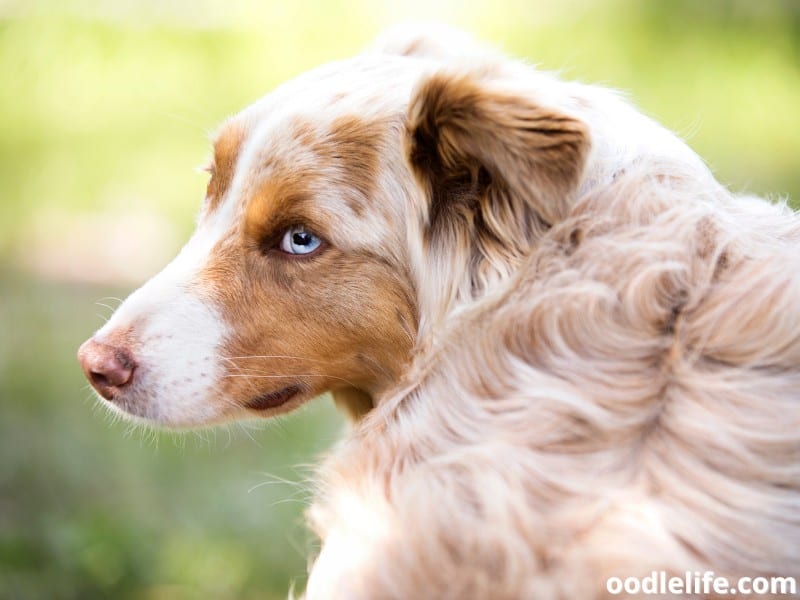
On the other hand, a relaxed and calm dog may be more likely to eat well and enjoy their meal.
Environmental changes can also affect your shepherd’s eating habits. For example, introducing new people to the household, such as a boyfriend, girlfriend, or even a new baby, might cause unease or worry for your dog. This could result in a change in appetite, making them eat less or skip meals altogether.
Stress, in particular, plays a significant role in your dog’s eating behavior. A stressed Australian Shepherd may resort to boredom eating or completely lose their appetite. Keeping your dog’s environment calm and consistent and providing them with enough mental and physical stimulation can help alleviate stress and prevent eating issues.
On the flip side, a loving and emotionally stable environment may encourage your Australian Shepherd’s appetite. Show your dog some love and positive reinforcement, and you might find them eagerly waiting for mealtime. However, remember that moderation is key; too much pampering might spoil them, causing them to become picky eaters.
Lastly, it’s essential to monitor your dog’s behavior and emotions while keeping an eye on their eating habits. It’s crucial to strike a balance between their emotional well-being and their nutritional needs. If you’re unable to address the issue yourself, consider seeking the advice of a professional, such as a veterinarian or animal behaviorist, to help determine the root cause and find a solution.
Changes in Appetite and Eating Habits
If your Australian Shepherd isn’t eating, it could be due to a variety of reasons. Appetite changes are common in pets, and a fluctuation in their eagerness to eat is not necessarily a red flag. However, consistently refusing to eat or a sudden change in their eating habits might indicate an issue.
As dogs age, their eating habits can change. Puppies usually have a stronger appetite compared to adult or senior dogs. Be mindful of how weight plays a role as well because having a healthy weight is essential for a dog’s wellbeing.
If you’ve recently adjusted their feeding routine, give it some time, as some dogs may take a while to adapt to the changes in their feeding schedule.
It’s crucial to maintain a consistent feeding routine – having a predictable mealtime can help keep your Australian Shepherd’s appetite stable. Observe your pet and consider any recent modifications to their routine or diet. Are they experiencing new stressors in their environment?
Have you switched brands or flavors of dog food? Such factors can contribute to your pet’s eating habits.
In some cases, your dog might not be eating due to their instincts. For instance, dogs can detect if their food has gone bad or if a new treat isn’t agreeing with their palate. Their anorexia might also be an indication of underlying health issues, so it’s crucial to monitor how long the lack of appetite persists.
If it lasts more than a day or two, it’s wise to consult a veterinarian.
Despite our best efforts to understand our furry friends, sometimes the reason for their lack of appetite remains unclear. So if your Australian Shepherd turns its nose up at their dinner, don’t panic just yet. Keep an eye on them, review any recent changes, and remember that it’s always better to play it safe and consult your veterinarian when in doubt.
Food-Related Reasons
When it comes to Australian Shepherds not eating, there are several food-related reasons that could be affecting their appetite. Firstly, it’s important to consider the type of food you’re offering your furry friend. There are several options available, like dry food, which includes kibble and other dehydrated options; wet food, which refers to canned or moist meals, and treats such as biscuits and chews.
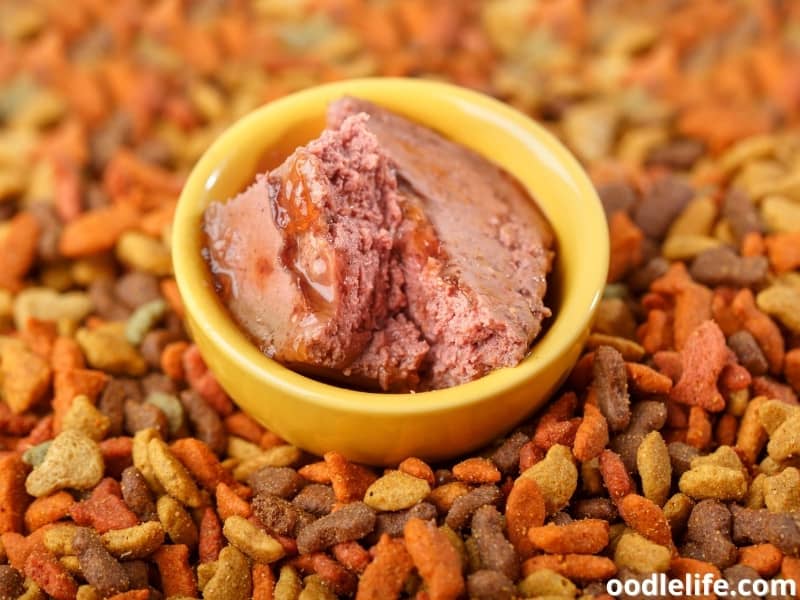
Your dog’s food preference might be one of the culprits leading to a picky appetite. Just like humans, dogs have their individual taste preferences. Ask yourself if you’ve recently switched up their usual menu or if you’re trying a new brand of food.
If so, your Aussie may not be as keen on the new protein source or flavor.
The contents of your pup’s food could play a role too. It’s essential to check if they receive adequate protein, nutrients, and variety in their diet. For example, if your dog’s meals are mainly chicken-based and they’re not eating, perhaps trying out another protein source, like beef or fish, could help.
Adding some chicken broth or beef broth can also give their dry kibble a delicious, enticing twist.
Don’t forget that expiration dates matter. Make sure your dog’s food isn’t past its prime. Think of it this way: you wouldn’t enjoy consuming expired food, and neither would your pooch.
Lastly, distractions can make it difficult for your Australian Shepherd to focus on their meal. Check their eating environment for any disturbances, such as other pets, loud noises, or high foot traffic. Remember, a peaceful, calm eating space allows, and encourages, successful mealtimes.
In the end, figuring out why your Aussie isn’t eating is a process of trial and error. By exploring different food types, considering their preferences, and eliminating any potential distractions, you’ll be one step closer to satisfying your dog’s appetite and keeping them in tip-top shape. Who knows, once you crack the culinary code, you might even become the Gordon Ramsay of canine cuisine!
Environmental Factors
There could be several environmental factors affecting your Australian Shepherd’s eating habits. Let’s explore a few reasons that might help explain why your furry friend is not enjoying their meals.
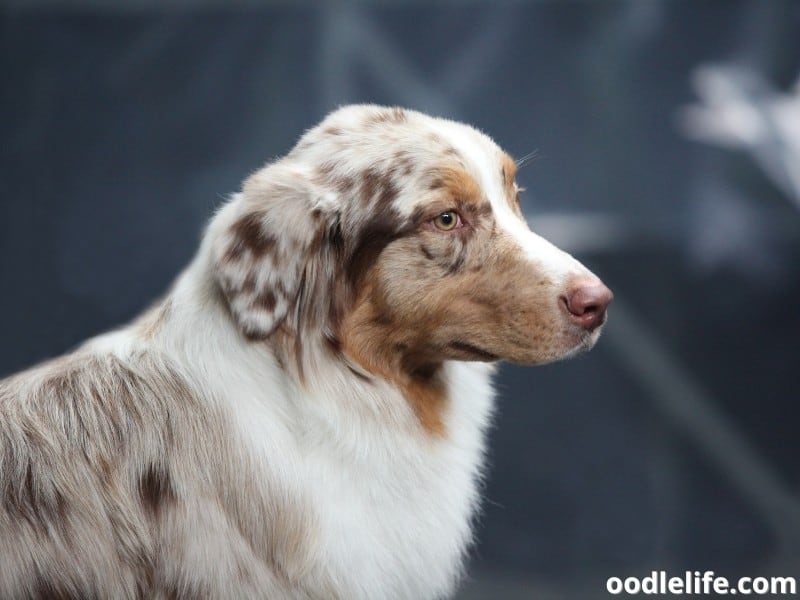
One primary reason could be stress caused by environmental changes. Australian Shepherds, originally bred for working on farms, may be sensitive to sudden alterations in their surroundings. For example, if you’ve recently moved to a new home, the unfamiliar environment may cause anxiety, leading to a loss of appetite in your dog.
It’s not uncommon for Fido to go on a temporary hunger strike while adjusting to their new abode.
Temperature and weather conditions might also play a role in your dog’s eating habits. Just like humans, dogs may be less inclined to eat when it’s too hot or too cold outside. They’re from Australia, mate, so they may not appreciate an extreme cold snap or scorching heat wave as much as a kangaroo might!
When your Australian Shepherd is not feeling well, their appetite could naturally decrease. A dog that’s under the weather might not be interested in food or may even outright refuse to eat. Keep an eye on your pet and consult with a veterinarian if the loss of appetite persists alongside other signs of illness.
Lastly, it’s important to consider the quality and type of food you’re offering. If you’ve recently switched dog food brands or flavors, your Aussie might be staging a taste-testing boycott. The verdict is in: a change in diet can sometimes lead to a temporary change in eating habits.
In short, give your Australian Shepherd time to adjust to new environments, monitor their health, and pay attention to their preferred grub. With a little patience and understanding, your pup’s appetite should return to normal, and they’ll be back to chowing down like a true Aussie outback champ!
Signs of Serious Health Problems
When an Australian Shepherd stops eating, it can be a worrisome sign for pet owners.

Here are some possible health issues that might be affecting your furry companion:
Vomiting and Diarrhea: These are common symptoms that may indicate gastrointestinal problems in your Aussie, such as an upset stomach or food intolerance. If the vomiting and diarrhea persist or worsen, there may be a more serious issue at play, like an infection or a blockage.
Malnutrition: If your dog isn’t eating and is showing signs of weight loss or lethargy, it’s essential to address the issue promptly. Malnutrition can lead to weak bones, a weakened immune system, and other complications, making your Aussie more susceptible to other health issues.
Liver Disease: Loss of appetite can be an early sign of liver disease in dogs. Other symptoms may include jaundice, increased thirst, and changes in stool color. It’s vital to consult a veterinarian if you notice these symptoms, as liver disease can be life-threatening if left untreated.
Kidney Disease: Like liver disease, kidney disease can also cause a loss of appetite in dogs. Symptoms of kidney disease may include increased thirst, frequent urination, weight loss, and lethargy. Early detection and treatment are crucial to help manage kidney disease and improve your Australian Shepherd’s quality of life.
Keep an eye on your dog’s behavior and physical condition, and if you notice any of these symptoms or anything else out of the ordinary, consult with a veterinarian to get a proper diagnosis and treatment plan. And remember, it’s always better to act on your instincts and check with a vet rather than wait for a serious health problem to escalate. As they say, better safe than sorry!
Tips to Encourage Eating
Is your Australian Shepherd refusing to eat? Fear not! Here are some helpful tips to get your furry friend back on track with their diet.
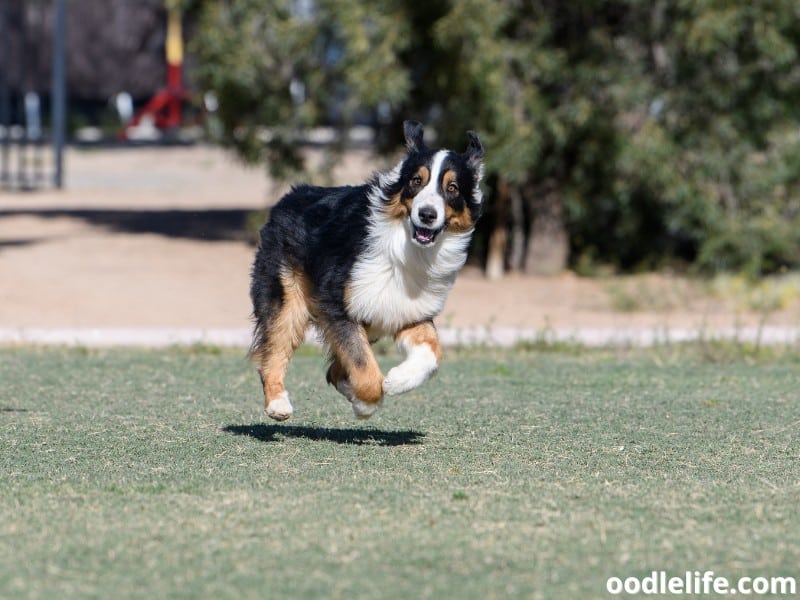
First things first, consider your Aussie’s exercise and energy levels. This breed is known for being highly energetic, and physical activity is essential to keeping their appetite up. Make sure you’re providing enough playtime and exercise to stimulate their hunger.
Fun-filled activities like fetch, long walks, or even agility training can help increase their appetite.
Now, let’s talk about their eating setup. Sometimes, the issue might be with their bowls. Australian Shepherds can be picky about the cleanliness, size, or even the material of their bowls.
Try providing them with different types of bowls, such as stainless steel or ceramic ones, to find out which one they prefer.
Speaking of being picky, this breed can occasionally be fussy when it comes to their food. Be patient and try to see if a change in their diet makes a difference. Opt for high-quality dog food, and maybe even mix in some tasty, healthy treats to tempt them.
Training can also play a role in encouraging your Australian Shepherd to eat. Establishing a routine for mealtimes can help your pup understand when it’s time to eat. Try to stick to a consistent feeding schedule, and avoid giving them treats too close to mealtimes to ensure they feel hungry when it really matters.
Another simple tip is to add a touch of warm water to their food. This can not only help release the aroma of their meal, making it more attractive but also soften kibble for dogs who might have dental issues or those sensitive to texture.
Remember, every dog is unique, and it might take a bit of trial and error before you discover what works best for your Australian Shepherd. Keep a close eye on their eating habits and consult a veterinarian if you have any ongoing concerns.
